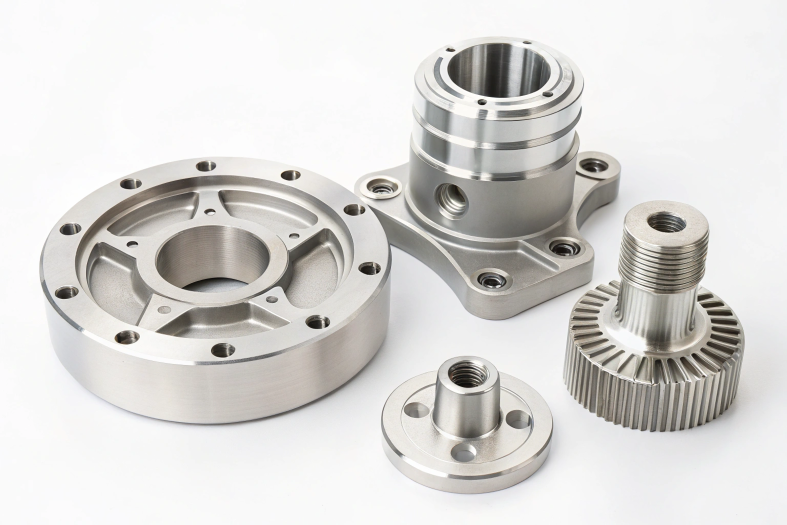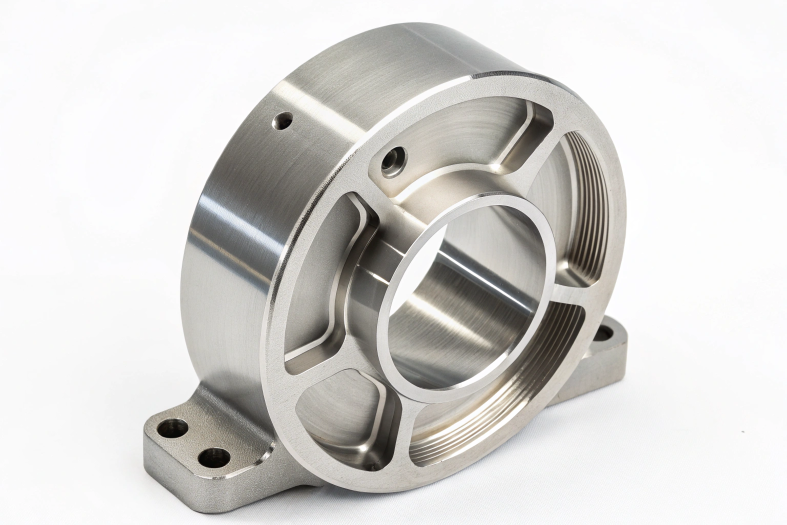Achieving top-quality CNC machining is critical for staying competitive in the industry. However, maintaining consistent precision and accuracy can be challenging, leading to wasted materials, increased costs, and dissatisfied clients. By adopting targeted strategies like process optimization, advanced equipment, and real-time monitoring, you can significantly enhance CNC machining quality and reliability.
Direct Answer:
CNC quality ensures precise, reliable machining by focusing on equipment maintenance, tool optimization, accurate programming, material consistency, inspection, skilled operators, and environmental control.

Understanding CNC Quality
In the world of modern manufacturing, CNC machining plays a critical role in delivering precision-engineered components used in industries like aerospace, automotive, medical equipment, and more. High-quality CNC machining not only ensures operational reliability but also reduces waste and enhances production efficiency. But what exactly is CNC quality, and why is it so crucial?
Definition
CNC (Computer Numerical Control) quality refers to the ability of machining processes to produce parts that adhere to exacting design specifications, maintain dimensional accuracy, and deliver consistent performance over time. It embodies the fusion of machine capabilities, operator expertise, and environmental conditions to minimize defects and achieve optimal results.
A "high-quality" CNC output doesn’t merely meet specifications—it exceeds expectations by offering reliability, durability, and repeatability in the finished product.
Key Metrics
Assessing CNC quality involves several critical parameters, each reflecting an essential aspect of the manufacturing process:
-
Precision:
Precision indicates how closely a machined component matches the intended dimensions. This is particularly vital for industries like aerospace, where even micron-level inaccuracies can compromise safety.- Example: In turbine blade manufacturing, tolerances as tight as ±0.001 mm are often required to ensure aerodynamic efficiency.
-
Tolerances:
Tolerances specify the allowable deviation from design dimensions. Tight tolerances are often necessary for high-performance applications, such as medical implants or automotive engine parts.- Example: Automotive engine pistons typically require tolerances within ±0.01 mm to ensure smooth operation and fuel efficiency.
-
Repeatability:
Repeatability measures the ability to produce identical parts consistently across multiple production runs. This is critical for large-scale production where uniformity impacts assembly and functionality.- Example: In electronics manufacturing, connectors and housings must align perfectly across thousands of units to ensure proper functioning.
-
Surface Finish:
Surface finish refers to the texture and smoothness of machined surfaces. High-quality finishes improve performance by reducing friction and enhancing aesthetic appeal.- Example: Precision optical lenses demand a surface roughness of Ra ≤ 0.02 μm to achieve optimal light transmission.
Common Challenges
Despite advancements in CNC technology, achieving consistently high-quality machining remains challenging. Here are the main obstacles manufacturers face:
-
Machine Wear and Tear:
Over time, CNC machines experience wear in critical components like ball screws, spindle bearings, and linear guides. This wear leads to inaccuracies, reduced precision, and compromised repeatability.- Impact: For industries like aerospace, even minor deviations can render a component unusable, leading to increased costs and delays.
-
Programming Errors:
Incorrect or suboptimal programming, such as poorly optimized toolpaths or incorrect feeds and speeds, can result in overcuts, undercuts, and surface defects.-
Impact: A single programming error can ruin an entire production batch, wasting time and materials.
-
Solution: Advanced CAM software with simulation capabilities helps detect and correct errors before machining.
-
-
Material Inconsistencies:
Variations in material properties, such as hardness, ductility, or grain structure, can affect machinability and lead to defects.-
Impact: Non-uniform material batches may cause tool wear or produce parts with varying mechanical properties.
-
Solution: Partnering with reputable suppliers and using certified materials reduce variability.
-
-
Environmental Factors:
External conditions such as temperature fluctuations, humidity, and vibrations can affect machine performance and material behavior.-
Impact: Thermal expansion of machine components or materials can lead to inaccuracies, especially in high-precision applications.
-
Solution: Controlling environmental conditions ensures stability and precision.
-
Industry-Specific Importance
Understanding CNC quality is critical across various industries due to their unique demands:
-
Aerospace:
Components like turbine blades and structural parts require tight tolerances and high strength-to-weight ratios. Subpar machining quality can compromise safety and performance. -
Medical Equipment:
Surgical tools and implants must meet stringent quality standards to ensure patient safety and regulatory compliance. -
Automotive:
Engine parts, transmission components, and braking systems demand consistent quality for reliable vehicle performance and durability.

Methods to Improve CNC Quality
Improving CNC quality requires a multifaceted approach, addressing every aspect of the machining process. Below, we explore proven strategies, enriched with authoritative insights and real-world applications.
1. Equipment Maintenance
Maintaining CNC machines is critical to achieving consistent quality. A well-maintained machine not only extends operational life but also ensures precision and efficiency.
-
Routine Checks:
Regular inspections of key components such as spindles, linear guides, and servo motors help identify early signs of wear or misalignment. For example, spindle runout measurements can detect deviations that compromise machining accuracy. -
Calibration:
Calibrating machines at regular intervals ensures they maintain the specified tolerances. Techniques such as ball bar testing or laser interferometry are used in advanced facilities to align axes and maintain dimensional integrity. -
Lubrication:
Proper lubrication minimizes friction, reduces heat generation, and prevents premature wear of moving parts. Automated lubrication systems in modern CNC setups improve reliability by delivering precise amounts of lubricant.
2. Tool Selection and Management
Cutting tools directly influence the accuracy and surface finish of machined components. Proper tool management ensures consistent results.
-
High-Quality Tools:
Premium cutting tools with high wear resistance and sharp edges, such as polycrystalline diamond (PCD) or coated carbide tools, offer superior performance when machining challenging materials like titanium or composites. -
Tool Wear Monitoring:
Advanced monitoring systems use sensors to measure cutting forces and vibrations, enabling real-time detection of wear. This technology ensures timely tool replacement, reducing scrap rates and downtime. -
Tool Material:
Choosing the correct tool material for the application is essential. For instance:- HSS: Ideal for general-purpose machining.
- Carbide: Preferred for high-speed applications.
- Ceramics: Excellent for hard turning and high-temperature operations.
3. Precision Programming
Programming is the foundation of CNC operations. Errors in toolpaths or feeds and speeds can lead to dimensional inaccuracies or tool damage.
-
CAM Software:
High-end CAM systems, like Mastercam or SolidCAM, provide sophisticated algorithms for generating optimized toolpaths. Features such as dynamic machining and multi-axis programming enhance productivity and precision. -
Optimization Strategies:
Adaptive machining techniques adjust toolpaths in real time based on material conditions, reducing machining forces and improving surface quality. Techniques like trochoidal milling also reduce heat buildup. -
Error Reduction:
Simulations in virtual machining environments detect and correct potential issues, such as collisions or overcutting, before physical machining begins.
4. Material Optimization
Material properties significantly affect machining quality, making it essential to select and prepare materials appropriately.
-
Material Selection:
Materials with uniform properties, such as 6061 aluminum or stainless steel 304, are commonly chosen for precision machining. Their predictable behavior ensures dimensional stability. -
Stress Relief:
Pre-machining treatments, like annealing or vibration stress relief, reduce residual stresses, minimizing warping or deformation during machining. -
Consistency:
Partnering with trusted suppliers ensures access to high-quality raw materials. For critical applications, materials are often certified to industry standards like ISO 9001.
5. Quality Control and Inspection
Inspection ensures that machined parts meet the required specifications, helping to identify and correct deviations.
-
Inspection Tools:
Coordinate Measuring Machines (CMMs) provide precise measurements of complex geometries, while optical scanners capture detailed surface data. These tools are indispensable for verifying intricate designs, such as aerospace components. -
In-Process Monitoring:
Sensors embedded in CNC machines monitor cutting forces, temperature, and vibrations. Deviations trigger alarms, allowing operators to intervene immediately. -
Post-Processing Inspection:
High-precision instruments like surface roughness testers and profilometers measure surface finish, ensuring compliance with customer specifications.
6. Operator Training
Human expertise complements technological advancements in CNC machining. Skilled operators are better equipped to maximize machine performance.
-
Skill Development:
Comprehensive training programs cover topics such as advanced programming, tool selection, and troubleshooting. -
Continuous Learning:
As technologies evolve, operators must stay updated on advancements in CNC machines and software. Workshops and online courses provide accessible learning opportunities. -
Certifications:
Certified operators often deliver better results, as their credentials reflect a deep understanding of machining principles and industry standards.
7. Environmental Control
The environment in which CNC machines operate plays a critical role in determining machining outcomes.
-
Temperature and Humidity:
Controlled environments prevent material expansion or contraction due to temperature changes. For example, maintaining a room temperature of 20°C ± 1°C is standard in high-precision industries. -
Vibration Management:
External vibrations can affect machining precision. Solutions like vibration isolation pads or machine foundations mitigate this issue. -
Clean Workspace:
Dust and debris not only affect surface finishes but also clog lubrication systems and reduce tool life. Regular cleaning protocols ensure consistent quality.

Conclusion
Achieving superior CNC quality requires a comprehensive strategy that integrates equipment maintenance, precise programming, material optimization, and operator expertise, alongside environmental control. By adopting these methods:
Enhanced Precision and Consistency: Companies can consistently deliver parts with tighter tolerances and superior surface finishes.
Increased Operational Efficiency: Proactive measures reduce machine downtime, lower defect rates, and improve overall productivity.
Elevated Customer Satisfaction: Delivering high-quality, reliable components fosters trust and strengthens client relationships.
As manufacturing evolves, emerging technologies are poised to revolutionize quality control:
AI-Driven Predictive Maintenance: Leveraging artificial intelligence to foresee equipment issues before they cause disruptions.
IoT-Enabled Monitoring Systems: Real-time insights into machine performance to ensure precision at every step.
Smart Materials: Innovations that adapt to machining conditions, enabling greater accuracy and efficiency.
By embracing these advancements and continuously refining traditional methods, manufacturers can stay ahead in a competitive landscape, delivering exceptional results for even the most demanding applications. Now is the time to assess your processes, adopt new technologies, and position your operations for the future of CNC machining.
FAQ:
How can I improve my CNC accuracy?
- Regular Calibration: Periodically calibrate your machine using tools like laser interferometers or ball bar testers to ensure dimensional accuracy.
- High-Quality Tools: Use sharp, durable cutting tools suitable for your material and application.
- Optimized Programming: Implement precise CAM software and optimize toolpaths to reduce errors.
- Material Preparation: Stress-relieve materials before machining to prevent deformation.
- Environmental Stability: Maintain consistent temperature and humidity in the machining environment.
How to improve CNC efficiency?
- Use High-Speed Machining: Optimize toolpaths and feeds/speeds for faster operations without compromising quality.
- Tool Management: Monitor and replace worn tools promptly to avoid downtime.
- Batch Processing: Group similar parts or operations to reduce setup time.
- Advanced Software: Utilize CAM software with adaptive machining strategies for efficient material removal.
- Operator Training: Ensure operators are skilled in advanced CNC techniques to minimize errors and delays.
What is CNC in quality control?
CNC quality control involves using precision tools and methods to ensure machined parts meet design specifications. Key elements include:
- In-Process Monitoring: Real-time systems detect deviations during machining.
- Inspection Tools: Devices like CMMs, laser scanners, and gauges verify dimensions and tolerances.
- Surface Testing: Tools like profilometers ensure the surface finish meets standards.
- Data Analysis: Documenting and analyzing machining results for continuous improvement.
What is machining quality?
Machining quality refers to the overall performance of a machined part in terms of:
- Precision: How accurately the part matches its design dimensions.
- Tolerances: The allowable deviation from specified measurements.
- Surface Finish: The smoothness and texture of the part’s surface.
- Repeatability: Consistent production of identical parts in successive runs.
Achieving high machining quality depends on machine condition, programming accuracy, tool selection, and environmental factors.


